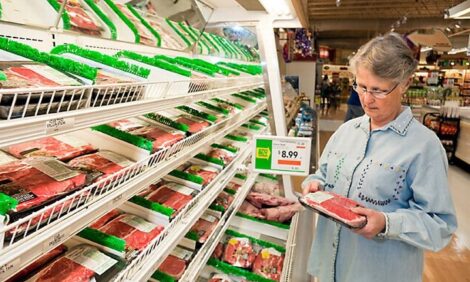



Feed, water, air and comfort: the keys to prevent tail biting
Tail biting in pigs remains something of a mystery. What triggers a pig or pigs to bite tails? Why do some express this vice and others do not?“My answer is somehow the pig feels like he doesn’t have the feed, water, air or comfort he needs,” Jer Geiger, health assurance veterinarian for PIC, told Pig Health Today. “He feels he’s in a competitive environment, and it’s part of his nature to respond with biting.”
There’s still a lot of confusion about tail biting, Geiger said. To establish a better understanding, he points to research that has grouped pig motivations into three categories:
- Category 1 is a two-stage process, which is related to the pig’s natural behaviour as an inquisitive forager. “In modern production, practices and facilities we have eliminated or severely limited their ability to forage,” Geiger said. “So, the pig goes looking for other substrates that he might explore.”Stage one starts off as innocent nibbling but then may develop into more aggressive biting, which is stage two.
- Category 2 is outright aggressive biting with severe damage and pain to the victimised pig. This behaviour develops from the pig’s frustration related to limitations of space, feed or water. “He feels that he’s in a competitive environment and therefore needs to be competitive and aggressive,” Geiger said. In this situation, tail biting presents as a “more explosive” development; it’s not one pig that becomes aggressive but a group of pigs. “So, you see a sudden change throughout a whole barn or room,” he added. “One day there’s no evidence, and three days later it looks much different.”
- Category 3 involves individual pigs that seem obsessed with biting tails. “If you can find that one particular individual in a pen and remove it, the problem goes away,” Geiger noted.
Tail length matters
Over the years, pork producers have attempted to address tail biting by clipping tails during piglet processing. While this now common practice has discouraged tail biting in general, it has not eliminated it within some situations or groups of pigs.
Researchers have identified that docking the tail to a quarter of an inch at piglet processing is the appropriate length. It’s been shown that a longer tail stub, say one-half inch, increases the chance of tail biting. But more important than the ultimate length is the consistency within a group of pigs, Geiger said.
“If you vary between a quarter, a half and five-eighths (of an inch), now you’ve set yourself up for an even greater risk,” he added.
Many producers use quarter-inch spacers that they place on the piglet’s tail head to ensure tails are docked to a consistent length.
Prevention is the priority
Prevention is key because once tail biting begins, and you’re attempting to treat it, you’re fighting an uphill battle, Geiger said. The longer term solution is to focus on the basics that pigs need - feed, water, air and comfort.
Providing those resources is the daily standard on pig farms, but sometimes they fall out of balance. You will need to identify the trigger or the network of triggers that finally pushes the pig to the breaking point. That means observing the pigs as well as looking at the rearing conditions from a range of perspectives, such as a nutritionist’s and veterinarian’s perspective.
“The nutritionist will want to provide the optimal diet - and that’s the right diet for the right pig at the right age with the right intake,” Geiger added. You’ll need to determine if that’s actually happening. Have there been related stressors like an out-of-feed event?
From a production specialist’s point of view, is the ventilation system providing the optimal environment, including air-intake speeds and proper mixing? Also consider pig space allocations, not just floor space so that pigs can lie comfortably, but space to access feed and water.
“You also have to think of it from the perspective of a veterinarian, because health impacts the comfort of the animal,” Geiger said.
Finding the right fix will take time, he added. And, it won’t come down to just one thing; rather it will require a multi-disciplined approach.
“What it comes down to is the pig is the ultimate decision maker,” Geiger said. “At the end of the day, it’s not what’s on paper but what the pig actually receives and feels.” The pig will tell you if the conditions are not optimal.








